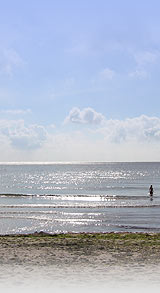There's probably a little ordtak
 |
monitor a significant number of key tropospheric trace gases including formaldehyde, methane, sulphur dioxide and carbon monoxide and dioxide, |
Antall ordtak er 2097865
varav 2119080 på nordiska
Ordtak (2097865 st) Søk
Kategorier (3944 st) Søk
Forfattere (201310 st) Søk
Bilder (4592 st)
Født (10498 st)
Døde (3319 st)
Datoer (9520 st)
Land (27221 st)
Idiom (4439 st)
Lengde
Topplistor (6 st)
Ordspråksmusik (20 st)
Statistik
Denna sidan visar ordspråk som liknar "There's probably a little bit of human influence in here from carbon dioxide, and part of it is a cycle the Earth goes through. We can blame either one of those, but it's open for debate, and that's where the real question lies.".
Linkene lenger ned har ikke blitt oversatt till norsk. Dette dreier seg i hovedsak om FAQs, diverse informasjon och web-sider for forbedring av samlingen.
Barnslighet är både skattebefriat och gratis!
Vad är ordtak?
Hur funkar det?
Vanliga frågor
Om samlingen
Ordspråkshjältar
Hjälp till!
varav 2119080 på nordiska
Ordtak (2097865 st) Søk
Kategorier (3944 st) Søk
Forfattere (201310 st) Søk
Bilder (4592 st)
Født (10498 st)
Døde (3319 st)
Datoer (9520 st)
Land (27221 st)
Idiom (4439 st)
Lengde
Topplistor (6 st)
Ordspråksmusik (20 st)
Statistik
Denna sidan visar ordspråk som liknar "There's probably a little bit of human influence in here from carbon dioxide, and part of it is a cycle the Earth goes through. We can blame either one of those, but it's open for debate, and that's where the real question lies.".
Linkene lenger ned har ikke blitt oversatt till norsk. Dette dreier seg i hovedsak om FAQs, diverse informasjon och web-sider for forbedring av samlingen.
Barnslighet är både skattebefriat och gratis!
Vad är ordtak?
Hur funkar det?
Vanliga frågor
Om samlingen
Ordspråkshjältar
Hjälp till!
 |
Linkene lenger ned har ikke blitt oversatt till norsk. Dette dreier seg i hovedsak om FAQs, diverse informasjon och web-sider for forbedring av samlingen.
Barnslighet är både skattebefriat och gratis!
Vad är ordtak?
Hur funkar det?
Vanliga frågor
Om samlingen
Ordspråkshjältar
Hjälp till!
 |
